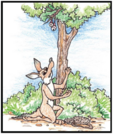Several version of Cinderella are read to students as they fill out comparison charts. The fairy tale genre is introduced.
- Subject:
- Elementary English Language Arts
- Material Type:
- Lesson
- Author:
- Utah Lesson Plans
- Date Added:
- 09/07/2021
Several version of Cinderella are read to students as they fill out comparison charts. The fairy tale genre is introduced.

The Compare & Contrast Map is an interactive graphic organizer that enables students to organize and outline their ideas for different kinds of comparison essays.

According to Goshute and Ute tradition, Coyote tales should only be told during the winter time. The tribes ask that the teacher use this lesson and story in the winter months. This lesson utilizes the Confederated Tribes of the Goshute (CTGR) tale, “Coyote Loses His Eyes” and the Ute Indian Tribe of the Uintah and Ouray Reservation (UIT) tale, “The Eye Juggler Coyote” to enhance comprehension skills and provide an introduction to comparing and contrasting plot, characters, theme and setting. The students will also be introduced to similarities and differences between the two tribes. Lastly, students will write a response summarizing using compare and contrast key words.Native peoples tell stories about Coyote and other animals to their children. Based on Coyote’s mistakes, the elders teach children about proper behavior and positive attitudes. The lessons taught help children to avoid making the same mistakes as Coyote and suffering the consequences in their own lives.

Students will engage with primary source documents to explore the reasons behind memorializing people in public art. Students will craft written or oral statements to support an argument in favor of installing a statue of Dr. Martha Hughes Cannon, Philo T. Farnsworth, or Brigham Young in National Statuary Hall.

Students explore picture books to identify the characteristics of four types of conflict. They then write about a conflict they have experienced and compare it to a conflict from literature.

Students will learn to compare and contrast changes over time.